Description
Description
If you have ever wondered what's better, oat milk or coconut milk, this is the article for you!
In this article, we review the pros and cons of oat milk and coconut milk which can help you make a better decision when choosing between the two.
What's better for you, oat milk or coconut milk?
The answer is based on your needs, potential allergies, and your way of eating. If you have digestion issues and you want a unique fatty acid profile, then coconut milk is better. Alternatively, oat milk provides unique non-starch, prebiotic polysaccharides which support overall well-being.
Whether creating creamy and delicious dairy alternatives or simply using them as a viable substitute in baking or cooking, we have come to understand that oat milk and coconut milk are highly versatile foods with limitless applications.
Our mission is to answer your questions and provide a thorough explanation and the critical details necessary to understand the topic.
So, today we will answer the question…
What's better for you, oat milk or coconut milk?
Native to Southeast Asia and many other tropical regions worldwide, Coconuts are a treasured food known for their ability to provide a highly nourishing and unique source of fats and nutrients.
The nutritious fats in coconuts offer a fast and sustainable source of energy, and coconut's unique blend of micronutrients may support a perfect balance for supporting optimal nourishment.
On the other hand, when we think of oats, we are often reminded of fond loving memories of grandma serving us a hot, delicious, and nourishing bowl of porridge on a cold winter morning.
Oats have been revered for thousands of years as an inexpensive and highly nutritious food that may support overall well-being and is considered a quality food source maintaining sustained energy.
What are the criteria for “Better”?
In order to answer this question correctly, it is essential to define what is meant by the term “better” and what we are referring to when we use it.
Better is defined as (specifically when referring to food) something of tremendous or higher versatility and nourishing qualities.
In this case, when we speak of better, this is running parallel to potentially defining what is healthier.
Every culture defines how and why an individual food is considered “healthy” based on various factors. According to western medicine, healthy food is a substance that provides the nourishment needed to sustain well-being and retain energy.
Traditional Chinese Medicine looks at food from a slightly different perspective. According to TCM, food is not defined as healthy or unhealthy but, instead, if it is the right food for an individual at a specific time. In TCM, the principle behind nutrition is called the five elements theory diet and believes that the energetic effects foods can have on the body(warming, cooling, drying, moistening) are what dictate how one should eat. But there are also general guidelines for different times of the year.
For example, TCM believes that it is best to eat most foods cooked and warm during the cold months of winter for better digestion and utilization and to keep you warm and well-nourished.
In the warm summer months, when people are out and moving around, TCM generally looks at lighter, more cooling diets with more fresh produce as naturally healthy.
All about Oat Milk
Oat milk is a dairy-free alternative to cow’s milk created by blending oats and water and straining the mixture. This process would produce excellent, creamy oat milk in a perfect world. Unfortunately, this is not the case, as you often end up with a slimy, gel-like concoction.
If you have ever made oatmeal, you know this is the exact same end product. When you soak oats in hot water, they swell and gelatinize due to how the starch reacts to the heat.
The starch in oats is made up of two kinds of sugar;
- Amylose – Is hydrosoluble and starts to break water down) and
- Amylopectin – Absorbs water and can swell up to ten times its size).
Once amylose is free, it begins bonding with other molecules, resulting in this gel-like consistency.
For this reason, oat milk must undergo an enzymatic process to create a creamy, silky-smooth texture.
The primary enzyme used in the “desliming” process is amylase which is commonly found in bananas, mangos, and papayas.
Amylase is an enzyme specific for breaking down starches.
In oats, it will turn the long sugar chain amylose and amylopectin structure into smaller chains of glucose, preventing the typical gelatinous-like result. Once these sugars are broken down, they will give your oat milk a naturally sweet taste.
Polysaccharides and Beta Glucans
Polysaccharides are large carbohydrate molecules containing many small sugar molecules (monosaccharides) bonded together and are the most abundant carbohydrate found in food.
Oats are deemed a quality source of non-starch polysaccharides, which make up around 60% of their total soluble fiber.
Beta Glucans are a type of polysaccharide and soluble fiber that come from the cell wall of plants, fungi, and grains.
The primary component of the non-starch polysaccharides in oats is beta-glucans 1-3 and 1-4 (A total of 4% beta-glucans). Studies show that these non-starch polysaccharides found in oats potentially support a wide range of factors related to metabolic syndrome.
A review of the role of non-starchy polysaccharides in human nutrition determined that NSP’s compounds correspond to dietary fiber and show various effects in both the small and large intestines.
A randomized control study looking at oat beta-glucans effect on serum cholesterol showed a significant reduction in total and LDL cholesterol.
Finally, in the Journal of Nutrition and Metabolism, the following was stated about beta-glucan's effect on obesity and metabolic syndrome;
Go here for a very interesting article about oat milk powder and oat flour:
Oat milk powder vs. oat flour (the difference)
All about Coconut Milk
In the past, coconut was believed to be unhealthy due to its high saturated fat content.
However, it has now been shown that the fat contained in coconut is unlike any other fat on earth and has high nutritional value.
The Coconut Research Center explains,
“The vast majority of fats and oils in our diets, whether saturated or unsaturated or come from animals or plants, are composed of long-chain fatty acids (LCFA).”
All fatty acids share the same basic structures; One carboxyl group is attached to a chain of carbon atoms. Long-chain fatty acids have 13-21 carbon atoms in their tails. Some 98 to 100% of all the fatty acids you consume are LCFA.
Coconut is known to have MCFA or medium-chain fatty acids, also called MCT or medium-chain triglycerides containing 6-12 carbon atoms.
MCFA are metabolized by the human body differently because of their size. They are rapidly broken down and go straight to the liver, where they are used as an instant energy source or turned into ketones.
Ketones are created when insufficient sugar or glucose supplies the body’s fuel needs.
Unlike the saturated and unsaturated fats in vegetable oils, eggs, milk, and meats, which contain LCFA, coconut is a rare dietary source of MCFA and, therefore, highly beneficial to the body and overall health.
Only recently has modern medical science unlocked the secrets to coconut’s unique healing powers.
Coconut’s fatty acid breakdown:
- Caprylic Acid C-8:0 (8%)
- Caprylic Acid C-10:0 (7%)
- Lauric Acid C-12:0 (49%)
- Myristic Acid C-14:0 (8%)
- Palmitic Acid C-16:0 (8%)
- Stearic Acid C-18:0 (2%)
- Oleic Acid C-18:1 (6%)
- Linoleic Acid C-18:2 (2%)
According to an article titled The properties of Lauric acid and their significance in coconut oil, “the primary fatty acid of coconut oil is lauric acid, which is present at approximately 45–53 %.
The metabolic and physiological properties of lauric acid account for many of the properties of coconut oil.
Coconut oil is rapidly metabolized because it is easily absorbed, and lauric acid is easily transported.
Detailed studies have shown that most ingested lauric acid is transported directly to the liver, where it is converted to energy and other metabolites rather than stored as fat.
Such metabolites include ketone bodies, which can be used by extrahepatic tissues, such as the brain and heart, as a quick form of energy. Studies on the effect of lauric acid on serum cholesterol are contradictory. Among saturated fatty acids, lauric acid has been shown to contribute the least to fat accumulation.”
As more research and quantitative data are released regarding this highly nourishing food's incredible qualities and values, we do not doubt there will be many exciting facts to discuss.
Coconuts are an incredibly functional food with unlimited nourishing potential for overall well-being.
For more information about coconut milk, you are invited to review these helpful resources:
So, what’s better? Oat milk or coconut milk?
Because both oat milk and coconut milk are dairy-free alternatives each has unique nourishing qualities.
The answer to which is better is based on your individual needs, potential allergies, and your current way of eating.
If your digestion is not entirely up to snuff and you desire a unique fatty acid profile added to your food, then coconut milk is the way to go.
On the other hand, oat milk provides unique non-starch, prebiotic polysaccharides which support a wide range of mechanisms of action for overall well-being.
In the end, one is not better than the other.
It all comes down to functionality, versatility, and which one suits your specific nourishment needs.
With that, we invite you to try our awesome Oat Milk and Coconut Milk products:

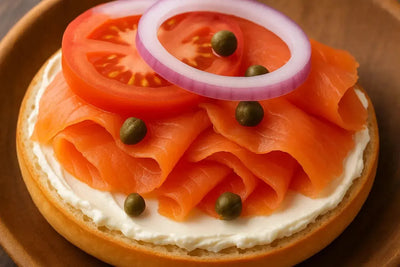



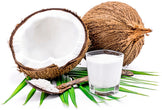

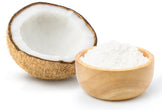












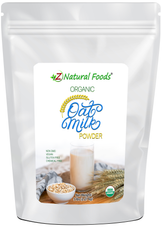
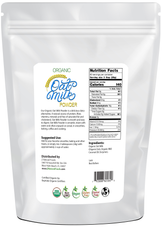




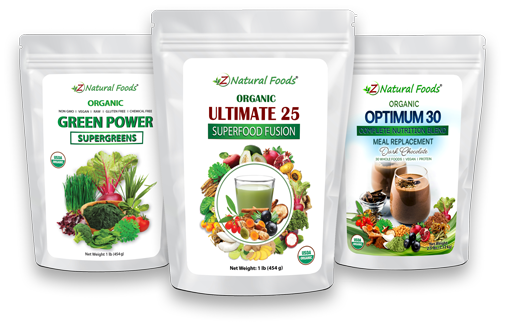
You say “… if your digestion is not entirely up to snuff…“ to go with coconut milk. My digestion and gut lining are problem. So does that mean oat milk is hard on the gut? If so, can you give more detail on digestion and the gut lining and oat milk?